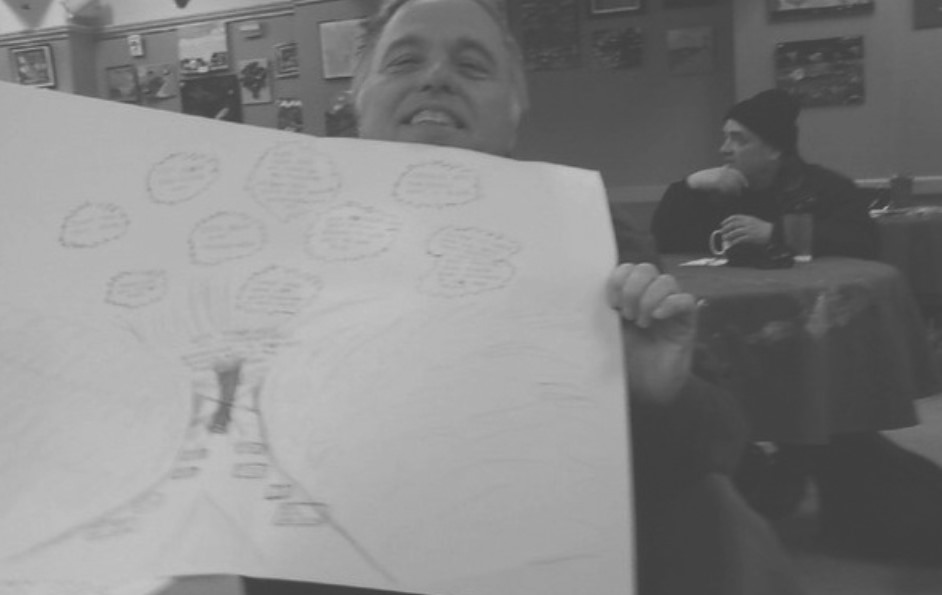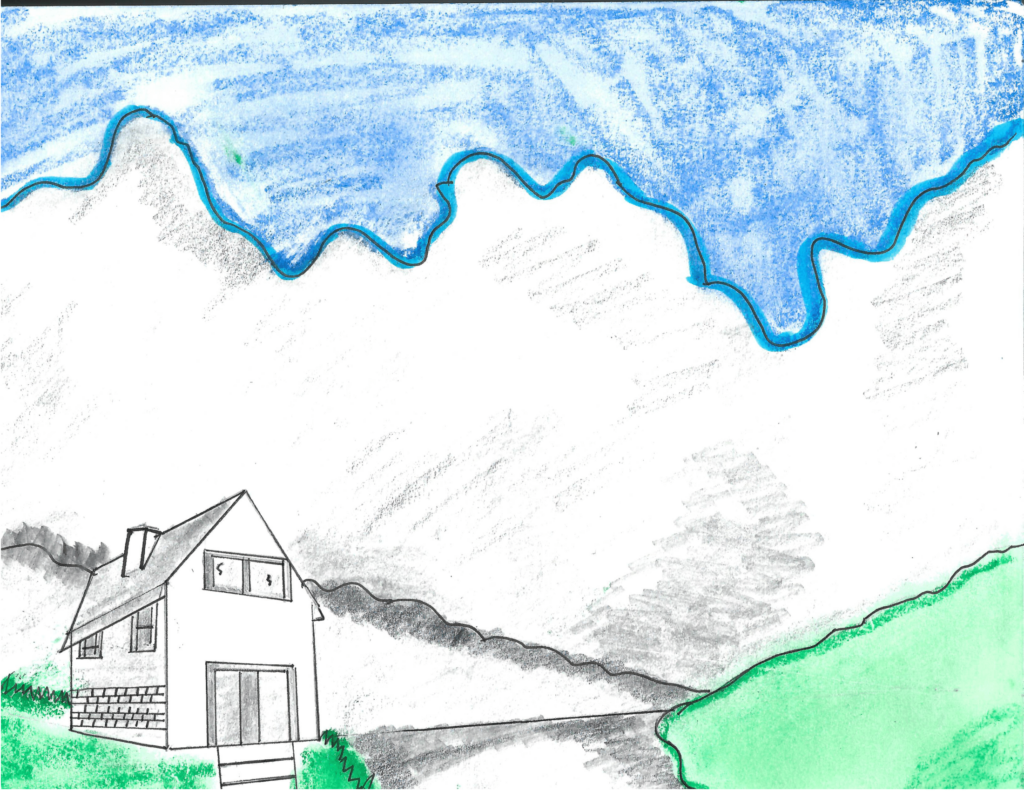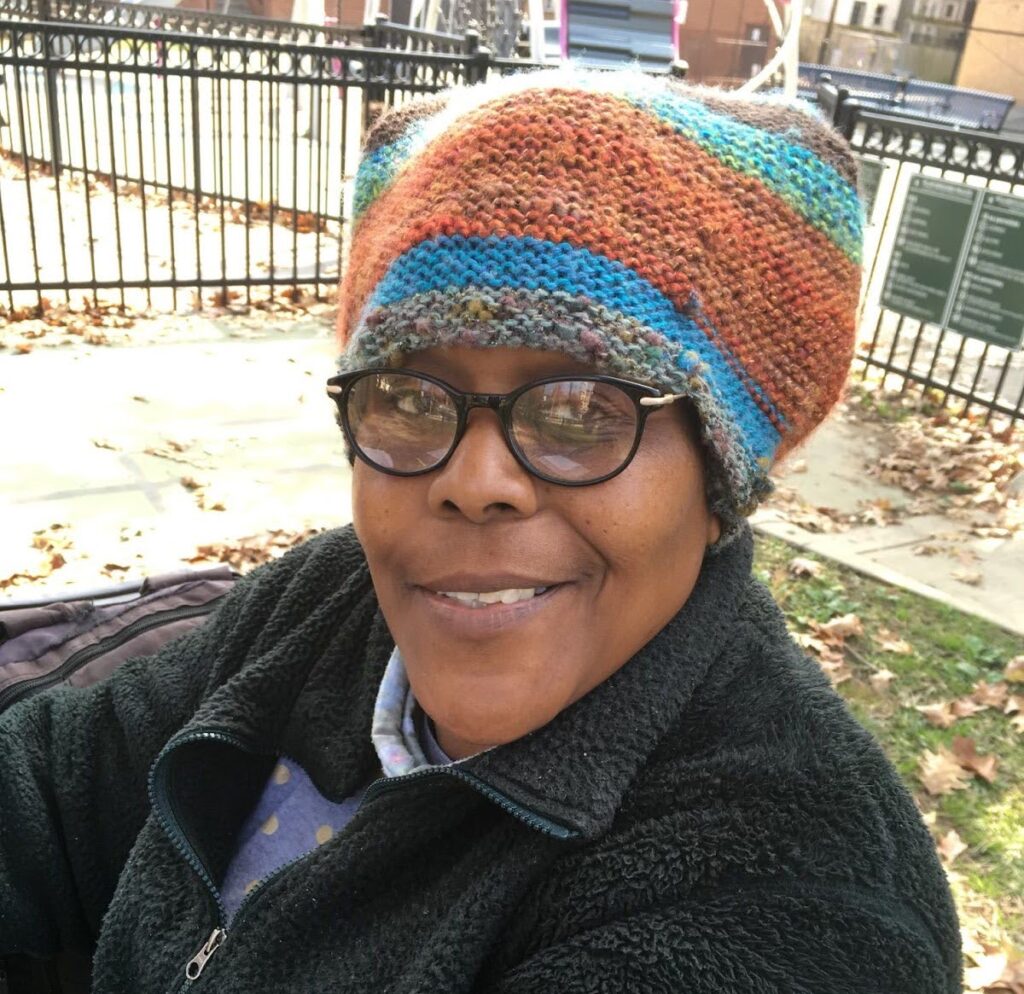The man sitting at the table, unshaven but proud, holds up pieces of paper scrawled with poetry and doodles about war, knowledge and prayer. With words, he says, people at Miriam’s Studio can learn to think for themselves and with each other.
“What I’m seeking is knowledge, pure knowledge: good, bad, indifferent,” James Morris, 61, says. “With poetry, you’re much freer to express yourself.”
On March 12, writers and contributors from Miriam’s Studio will present the case for poetry workshops building community at the Split This Rock Poetry Festival. From March 10 to 13, the festival will ask that people consider the benefits of poetry.
“People have been dehumanized in some pro-found ways that affect daily functioning,” said Kate Baasch, art therapist at Miriam’s Kitchen. “The studio is a safe place to be.”
The Studio, an art outreach program of Miriam’s Kitchen, has had a writing program for over 15 years. Originally called the After-Breakfast Pro-gram, the name changed on January 18 with the addition of the Evening Program.
Split This Rock Poetry Festival was first introduced in 2008, as a way of celebrating poetry used for social change, according to Sarah Browning, co-director of the festival.
“We wanted to praise these unsung heroes who are restoring vitality to our language,” she said.
Featuring 36 panels, with multiple panelists at each, the festival focuses on topics ranging from effecting political change to the place of black LGBTQ poets in the field. Catherine Crum, Deputy Director at Miriam’s, will be paneling “Poetry Workshops as Communities” on Friday with other studio writers.
“I just sit there and let the pen roll out,” said Morris, a poet at Miriam’s Studio.

Morris, who said he had been attending the program since December, praised it for its relax-ing atmosphere and comfort level.
In other places they have to “march in and march out,” he said, but at Miriam’s Studio they can “come in here and chill out.”
The Studio offers options besides poetry, including drawing, beadwork, and dramatic readings. Crum said that she’s heard people say they come to the facility specifically for studio time, during which they interact with each other and develop their talents. Morris displayed his artwork proudly, while Paul Lee Taylor, 46, writes both poetry and prose, as well as participates in the drama.
“You see people start to open up and relate to each other more,” Taylor said on the newcomers to poetry. “To be able to communicate more with each other.”
Crum is proud of the expansion of what she calls “therapeutic groups” since the outreach began, in meeting the people’s need.
“Our groups correspond to what people ask for,” Crum said. “Writing and art groups are a way to get what’s on the inside out, which is great.”
Browning, in the organization of the festival, said that she wanted to honor those who reach out to the socially slighted.
“[Those who are] helping us imagine alternatives to the status quo; who are bringing the sustenance of poetry to prisons and homeless shelters and after-school programs in low-income neighborhoods,” she said. “We wanted to bring them together to learn from one another and draw sup-port.”
Socially-aware poets will provide readings at the festival each night, in an effort to bring the necessary “creative vision” that, according to Browning, is needed to lift citizens out of their despair.
Despite the change in administration since the first festival in 2008, said Browning, people still facing the same problems in health care, hunger, unemployment, and war.
“This is in part a crisis of imagination,” she argued. “We need our most creative citizens, our poets.” Taylor and Morris both agree on the power of poetry to lift you up.
“I thought I had control, but I didn’t,” Taylor admitted in referring to his life before the studio.
“Art helps people think and create,” said Morris. “Take the evil of psychiatry and turn it into something good,” he joked.
Miriam’s Studio takes place from 8 to 9:45 on weekday mornings for creative writing and art therapy, and from 2:30 to 4:30 on weekday afternoons.
Taylor had one final comment on the studio and the effect of poetry: “When you’re here, it’s like a paradise world.”








